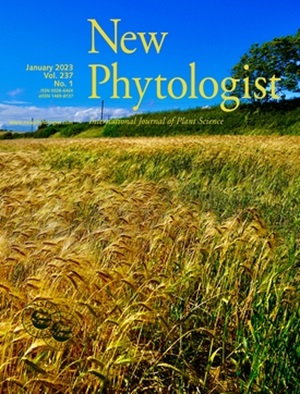Soil resource acquisition strategy modulates global plant nutrient and water economics
IF 8.3
1区 生物学
Q1 PLANT SCIENCES
引用次数: 0
Abstract
- Natural selection favors growth by selecting a combination of plant traits that maximize photosynthetic CO2 assimilation at the lowest combined carbon costs of resource acquisition and use. We quantified how soil nutrient availability, plant nutrient acquisition strategies, and aridity modulate the variability in plant costs of nutrient acquisition relative to water acquisition (β).
- We used an eco-evolutionary optimality framework and a global carbon isotope dataset to quantify β.
- Under low soil nitrogen-to-carbon (N : C) ratios, a mining strategy (symbioses with ectomycorrhizal and ericoid mycorrhizal fungi) reduced β by mining organic nitrogen, compared with a scavenging strategy (symbioses with arbuscular mycorrhizal fungi). Conversely, under high N : C ratios, scavenging strategies reduced β by effectively scavenging soluble nitrogen, compared with mining strategies. N2-fixing plants did not exhibit reduced β under low N : C ratios compared with non-N2-fixing plants. Moisture increased β only in plants using a scavenging strategy, reflecting direct impacts of aridity on the carbon costs of maintaining transpiration in these plants. Nitrogen and phosphorus colimitation further modulated β.
- Our findings provide a framework for simulating the variability of plant economics due to plant nutrient acquisition strategies in earth system models.
求助全文
约1分钟内获得全文
求助全文
来源期刊

New Phytologist
生物-植物科学
自引率
5.30%
发文量
728
期刊介绍:
New Phytologist is an international electronic journal published 24 times a year. It is owned by the New Phytologist Foundation, a non-profit-making charitable organization dedicated to promoting plant science. The journal publishes excellent, novel, rigorous, and timely research and scholarship in plant science and its applications. The articles cover topics in five sections: Physiology & Development, Environment, Interaction, Evolution, and Transformative Plant Biotechnology. These sections encompass intracellular processes, global environmental change, and encourage cross-disciplinary approaches. The journal recognizes the use of techniques from molecular and cell biology, functional genomics, modeling, and system-based approaches in plant science. Abstracting and Indexing Information for New Phytologist includes Academic Search, AgBiotech News & Information, Agroforestry Abstracts, Biochemistry & Biophysics Citation Index, Botanical Pesticides, CAB Abstracts®, Environment Index, Global Health, and Plant Breeding Abstracts, and others.
 求助内容:
求助内容: 应助结果提醒方式:
应助结果提醒方式:


